Some people have a favorite book that they come back to, over and over. Other people have a particular movie or TV series that they like to rewatch. The passive comfort of revisiting an old place, like a hiking trail or a pond, provides a nostalgic sense of belonging and peace.
I have never read the same book twice, and I’ve never intended to watch the same movie twice.1 There are so many great books and movies, and I will die having never seen or read all of them. The opportunity cost of revisiting an old film, when new ones await, seems like a theft of the new by the old (at least from my perspective).
But this doesn’t mean that I don’t have my own desire to revisit old ground — I just go about it in a very peculiar way. When a particular form of media resonates with me, but contains imperfections, I have a desire to reform it in my own image.2
I’ve noticed there are a few pieces of media which I will spend hours “revising,” then put the project down, then come back to it six years later. My rewrite of the Star Wars Prequels is one such project.
Aesthetically, I think the Star Wars Prequels contain some of the most beautiful cinematic aesthetics of all time. This sounds “sloppish” and pedestrian, since the droids are ugly CGI.
I don’t mean to say that the movies don’t contain ugly elements, but that the things they get right are beyond anything else in modern cinema. Architecture and costume design fuse the ancient with the future. Star Wars is the ultimate archaeo-futurist project. Just listen to the soundtrack:3
The word “epic” refers to the national poetry of a country. The Greeks had the Cyclic Epics;4 the Romans had the Aeneid; the Norse had the Poetic Edda. Finland has the Kalevala; Anglo-Saxia had Beowulf; the Normans had Le Morte d’Arthur; the Germans have the Nibelungenlied.
In contrast to these older cultures, Russia did not begin its phase of development until later.5 Hence, when we speak of the epics of the Russian national literature, we are not speaking of the 8th century or the 14th century, but the 19th century, with Dostoevsky, Tolstoy, and Pushkin.
America has its own literary tradition, with Moby Dick standing out as the epic of WASP American culture. However, over the last 100 years, WASP America has died and been replaced with a new ecumenical America, with a majority of the elite being Catholic, Jewish, or non-Christian.
George Lucas, a self-described “Buddhist-Methodist,” represents the fusion of the Eastern Mahabharata and Germanic cultures. Lucas’ prophetic fusion of east and west will come to define America’s elite over the next century. Star Wars, which depicts the multi-racial struggle between empire and democracy, is the ultimate American epic.6
Characters like Jar Jar are insipid and childish. But figures like General Grievous, Darth Maul, and Emperor Palpatine represent higher noble types. The reason why we love Darth Vader is because he is a vision of a Nietzschean man. Even if Nietzscheanism is evil, it still inspires awe and wonder. It is only by such draconic types that a hero can exist by contrast — every Beowulf needs a Grendel.
I agree with Camille Paglia that Star Wars is operatic; it exceeds and goes beyond the petty, tepid drama of Don Quixote. It is civilizational in scope, but still Shakespearean and all too human. Lord of the Rings also has these attributes, but aesthetically, Tolkien was never able to integrate or assimilate technology into his positive vision. Lucas shows us how the forces of light and dark transcend technology, which can be used for good or evil. Tolkien’s limited vision sees technology only as a force for darkness, which is an impoverished worldview.
The Star Wars Prequels are cursed by insipid elements, driven by corporate greed. Each character, scene, and battle is interwoven with an insidious desire to sell more action figures. Jar Jar Binks is perverse. If this muck could be removed, then the brilliance of Star Wars could be recovered, and its true potential revealed.
There are many rewrites of the Prequels already existing. Hopefully, someday, AI can produce all these movies for free, and whichever script is best will become self-evident. For now, I will offer up my vision as a competitor among the others.
Hey, this isn’t leftist analysis! I did not sign up for nerdy Star Wars fanfiction!
Au contraire, dear reader. One cannot separate leftism from art. In fact, as you read, you will find that this fanfiction is a deep allegory for the political forces which animate our world today:
The conflict between NATO and “multi-polarity”
The moral ambiguity of Ukraine’s form of government
The slow, inefficient, and weak EU bureaucracy
Major Changes:
If you’re familiar with the story of the Star Wars Prequels, there are some immediate major changes in this rework you should be aware of:
Qui-Gon has been removed; Obi-Wan is already a Jedi master who is deployed on missions alone.
Palpatine is no longer a frail old man,7 but a decorated war veteran who has retired from the Jedi Order to become Chancellor of the Senate (a ceremonial position without power). Palpatine is a more sympathetic, attractive, and seductive figure, just as beautiful as Tolkien describes Sauron’s form as Annatar.
Yoda is a member of the Jedi Council, but not its leader. Yoda is a disagreeable “prophet in the wilderness” who issues warnings, but no one listens to him. Under no circumstances should Yoda be depicted as fighting or holding a lightsaber — he is a mystic, not a warrior.
Count Dooku is now Master Dooku, leader of the Jedi. He is faced with the crisis of authority facing the galaxy, but is arrogant and unresponsive to the challenges of the times.
Darth Maul, not Darth Sidious, is the “Dark Lord” behind the Separatists. He’s too cool to be killed in the first episode.
General Grievous is introduced in Episode I in place of Darth Maul.
I: THE PHANTOM MENACE
In the opening scene of The Phantom Menace, five terrified young slaves stand blindfolded and bound in the middle of an arena, with a crowd of thousands cheering. As the gates of the arena open, a deadly shriek pierces through the roar of the crowd.
The metal shackles on the slaves release, allowing them to remove their blindfolds, just in time to see deadly claws and razor-sharp teeth emerge from the gates.
Each man picks up a weapon scattered around the arena, and attempts to kill the beast, but each of them is torn to pieces in turn. The crowd goes wild.
Jabba the Hutt is watching the horror show from his royal throne.
Obi-Wan has arrived on the planet of Tatooine as a Jedi ambassador to negotiate with the Hutts.8 Tatooine is in violation of several galactic treaties related to trade and slavery, and Obi-Wan is sent to negotiate and seek a resolution.
Ignoring the fighting, Obi-Wan attempts to persuade Watto, Jabba’s chief advisor, to enact reforms.
In the games below, aliens are killed by other aliens to the roar of the crowd. The bodies of losers are tossed into the Sarlacc pit.
Then, a new challenger enters the arena. Obi-Wan senses something, and leaves Watto to peer over the balcony. Alone in the arena with the Acklay is a teenage slave by the name of Anakin Skywalker.
After Anakin’s miraculous victory, Obi-Wan disappears, and sneaks down into the underground city where Anakin is held, where slaves are bought and traded like sports teams.
Obi-Wan locates Anakin, and explains that he is to be inducted into the Jedi Order, which will require him to leave his sick mother behind. Anakin asks to visit her one more time, and promises to come back to save her and all the slaves of Tatooine.
After Obi-Wan’s disappearance, the Hutts, represented by Watto, enter secret negotiations with the Separatists, led by General Grievous and Jango Fett. Grievous claims to serve a secretive “Darth Maul,” and promises that an insurrection on Naboo is imminent.
Jango thanks Watto for helping smuggle weapons for the insurrection on Naboo. Once the Gungans take power, the Hutts can pilfer and split the mineral wealth of Naboo with the Separatist forces. Watto concludes the meeting, and Jabba laughs maniacally.
Meanwhile, Obi-Wan and Anakin head to Naboo, where King Amidala is old, frail, and presiding over the stirrings of a slave insurrection.9 The Gungans are an underclass who perform manual labor for the House of Amidala. Naboo is fantastically rich, but there are rumors that the Gungans are organizing an insurrection. Obi-Wan intends to mediate between the Gungan rebels in the jungle and the House of Amidala.10
While Obi-Wan discusses the situation with King Amidala, Princess Padme gives Anakin a tour of the palace. They discuss the condition of the Gungans, and Anakin is embarrassed to admit his birth into slavery. Padme is dismissive of her arranged marriage to the prince, but Anakin says she should be happy to have such a privileged family, and he misses his mother. Despite their polar opposite origins, there is attraction and empathy between them.
At this moment, the Gungans stage a coup, raping and pillaging the capital city of Theed. The royal army is caught by surprise. The King, Padme’s father, joins the battle, but is quickly killed, alongside Padme’s fiancé and her brothers, the presumptive heirs to the throne. The entire royal family is slaughtered.
Obi-Wan and Anakin rescue Padme and escape to Coruscant. Before the Senate, in reward for his bravery in battle, Anakin is granted the status of Padawan, and given a lightsaber.
Padme now exists in a legal limbo state, where she is not yet the queen. She could become queen if crowned in the palace, according to the constitution of Naboo. After coronation, she would control Naboo’s mining colonies, making her the richest queen in the galaxy. But for the moment, she is powerless.
Padme appears before the Senate to request help against the Gungan insurrection. However, the Senate is bureaucratic and reluctant to send military aid, instead suggesting a new attempt at negotiation. Padme is desperate and seeks alternative solutions.
Senator Palpatine, the young Chancellor of the Senate, sympathizes with her situation, claiming that the Senate has grown corrupt and weak. He implies that some Senators sympathize with the Separatists, and lack the will to restore order. Palpatine raises a motion to declare what has occurred in Naboo as galactic genocide. Opposed to the motion are the Gungans and Hutts, who promise to redistribute the wealth of Naboo throughout the galaxy, to the cheer of many Senators.
As Padme and Palpatine leave the senate chamber, a bomb explodes in an assassination attempt to rid the last royal in the line of Naboo. Palpatine shields Padme with his body, demonstrating his subtle use of the force and saving her life.
In the hospital where Padme is recovering, she tells Palpatine she will do anything to save her people. Palpatine says the situation is nearly hopeless, since his power is only ceremonial, but she could use her charms to grow closer to the Jedi, and use them to assassinate the leader of the Gungans.
“Although the Jedi are pledged to celibacy, if one could be seduced, then the Order could be influenced to take up the cause of Naboo. A marriage between yourself and Skywalker would forge a powerful new alliance between the royalty of Naboo and the strength of the Jedi. It would return us to the days of the Early Republic, before the Council became so… ideological.”
“But who?” As Padme and Palpatine are plotting, Obi-Wan and Anakin enter, who Palpatine has requested to serve as Padme’s bodyguards. Palpatine winks at Padme and leaves.
Padme and Palpatine meet with Master Dooku, head of the Jedi Council, to request aid for Naboo, having been denied in the Senate. Palpatine claims that even if the Gungans were willing to slaughter the royal family, they would not dare to kill the Chancellor of the Republic, and his diplomatic immunity would protect a new delegation.11 Yoda cryptically argues that this plan will lead to disaster. “A beast dead, no harm can do. Left alone, no harm will do. But injured, terrible is he.” But no one understands him. Dooku allows them to attempt a second round of negotiations, despite the fact that the first round resulted in total mayhem.
On the trip to Naboo, Padme asks Anakin to kill Boss Nass, the religious cult leader of the Gungan insurrection.12 She promises that if he helps her, she will use her power to save his mother. Anakin refuses, since this is in violation of his peacekeeping mission. But Padme argues that it is the only way to save her people. Anakin says nothing and walks away, unable to choose.
Palpatine and Padme (with bodyguards Obi-Wan and Anakin) meet with the Gungan Boss Nass on Naboo, who is accompanied by General Grievous, Jango Fett, and Watto the Hutt. Nass is sitting on King Amidala’s throne, having enslaved the humans of Naboo to work for the Gungans, reversing their roles. Palpatine tries to threaten Nass, telling him that he is in violation of several treaties. If he is unwilling to negotiate, the Senate will eventually sanction him, destroying the economy of Naboo.

Grievous replies to Palpatine,
Senator Palpatine, you should show more respect when speaking with the democratically elected leader of Naboo. The monarchy you defend has no legitimacy under the laws of the Republic. Here, the majority rules.
Nass claims that the Senate is weak; that the age of the Jedi is over; and dismisses the delegation. Palpatine declares that he will return someday with an army of the Republic to crush Nass for his insolence.
In response, Nass says, “if you-sa gunna come back, we-sa gonna whip you like-a da slave!” He then demonstrates the point by whipping one of his human slaves,13 a teenage boy, to taunt Palpatine. Padme cries. Obi-Wan motions to Padme that they should escape quickly to prevent a repeat of last time.
Lingering behind, Palpatine whispers to Anakin, “What use is the senate? What use are the Jedi, if they cannot stop the cruelty of the Gungans?”
Anakin becomes enraged at the sight of an innocent boy being tortured, and leaps to defend the slave, beginning a battle. Obi-Wan senses a disturbance in the force, and rushes back into the throne room, but the security force field prevents Obi-Wan from entering the room and stopping Anakin. Obi-Wan shouts “Anakin, no!” as Anakin kills Boss Nass.
General Grievous declares that this is an act of war, and that Anakin is to be sentenced to death for killing a democratically elected leader. In response, Palpatine issues a command via hologram to the Naboo Loyalists that they are to “execute Order 66.”
Obi-Wan breaks through the security barrier, and instructs Anakin to lead Palpatine and Padme to the ship while he holds off General Grievous.
Outside the palace, human slaves begin a “counter-revolution” against their Gungan masters. Jango Fett leaves to lead disorganized Gungan forces in the absence of Boss Nass. The “counter-revolution” of the humans against the Gungans results in a fierce street battle, with hand-to-hand combat, house by house.14
Anakin leads Palpatine and Padme through the Plasma Refinery Complex as a shortcut to reach the spacecraft hanger, while Grievous and Obi-Wan battle. Grievous manages to knock Obi-Wan unconscious. Presuming that Obi-Wan is dead, Grievous rushes ahead in pursuit of Padme.
Once inside the hanger, Anakin tries to use the force to close the blast doors behind them. Grievous uses his sheer strength to pry the doors open. As Anakin struggles, Palpatine closes his eyes to subtly aid him, and the doors slam shut on one of Grievous’s hands, causing his lightsaber to deactivate and fall to the floor.
For a moment, Anakin thinks they are safe, but Grievous begins to slice the doors open with his three remaining lightsabers.
Palpatine commands Anakin to bring Padme onto the ship and escape: he will hold off Grievous alone. Anakin protests, but Palpatine says that only the death of a Chancellor can bring the Republic to its senses, and he must make this sacrifice alone. He picks up Grievous’s fallen lightsaber.
As Grievous steps through the blast doors, Palpatine (a former Jedi) stands before Grievous, and commands him to halt in the name of the Republic, or he will be placed under arrest. Grievous laughs, but Palpatine activates the red lightsaber from Grievous’s severed hand, and they duel.
Inside the spacecraft, Anakin sets up the autopilot for Padme and tells her to leave without him. Anakin joins Palpatine in the duel against Grievous, forcing Grievous to retreat. Anakin expresses shock at Palpatine’s power, asking if he is a Jedi. Palpatine reveals that he is a “non-conformist” who believes he can best effect change through the Senate. Palpatine makes Anakin promise not to tell anyone what has happened, or he would be expelled from the Senate, and Anakin would be expelled from the Jedi.15
Obi-Wan awakens in a state of confusion with Palpatine kneeling over him and manipulating. Palpatine claims that after fighting valiantly, Obi-Wan was knocked unconscious, and Anakin alone forced Grievous to retreat. Palpatine claims that Anakin will fulfill the prophecy of a chosen one who would restore order to the galaxy.
After the success of the “counter-revolution,” the victory parade is grim, with Gungans in chains, and the decapitated head of Boss Nass being held up on a pike. Before Padme is presented to the masses as the new Queen, Padme leans in to kiss Anakin, before pulling away to wave to the crowd.
Padme is officially coronated the new Queen of Naboo, in the presence of Senator Palpatine, and her bodyguards, Obi-Wan and Anakin.
Summary:
The first movie exposes deep problems of corruption, bureaucracy, inefficient government, Padme’s motive for revenge, Anakin’s rebelliousness, and the power of Palpatine.
Rather than depicting Naboo as some kind of paradise, Naboo is depicted as a flawed society. The Gungans, rather than being innocent and funny, are savage and brutal. There’s a double standard in how the Republic treats Naboo vs Tatooine, and that hypocrisy helps justify the actions of the Separatists.
Darth Maul is depicted as the “arch villain,” with Grievous and Boba Fett as his top generals.
Palpatine is younger, stronger, more brave, action oriented, and admirable. Even if you know he is evil, his charisma and charm are seductive.
Anakin doesn’t start off as an angelic little boy, but as a rebellious, confused, and horny teenager.
One of the biggest changes is that Padme is made into a seductress whose motives are understandable, but very sneaky and selfish. She isn’t an idealistic constitutionalist defending democracy, but a young, cynical Machiavellian agent. Her character is somewhat modeled after Helen of Troy, as a beauty who causes the downfall of a state. She has a bit more Lilith or Lolita and a little less Virgin Mary.
The underwater city of the Gungans was removed; they now dwell in swamps, like a swamp version of Tusken raiders.
Podracing was removed.
II: ATTACK OF THE CLONES
The film opens with Padme standing before the Senate and calling for an investigation of the Hutts, who she claims are conspiring against the unity of the Republic, in league with the Sith.
Despite the victory of the “counter-revolution” on Naboo, the Separatists are spreading to other systems, covertly funded by the Hutts, who become even more rich and powerful.
Watto responds to Padme’s allegations by claiming that, under the leadership of Padme, Naboo has transformed into a military dictatorship in defiance of the majority. In response, Watto raises a motion to sanction Naboo for a violation of galactic rights. The Senate is deadlocked and cannot accomplish anything.
Outside the senate chamber, Padme asks Anakin to plead her case before Master Dooku once again.
Under the leadership of Dooku, the Jedi Council discusses what is to be done. Anakin interrupts, arguing that the Separatists tried to kill his master Obi-Wan; they are backed by a Sith Lord, and they should be brought to justice. Dooku reprimands Anakin for speaking out of turn, since he is only a Padawan, and threatens to expel him. Obi-Wan, as his Jedi master, defends Anakin, and repeats the same argument in a more respectful way.
Dooku responds that the Sith are long extinct, and that General Grievous is merely a copycat, and not a true Sith Lord.
The seduction of Grievous has only succeeded where the Republic has compromised its own ideals. If free elections were allowed on Naboo, the Gungan revolt would have never occurred. Perhaps it would be best if the Republic were to slowly transition to a more “multi-polar” form of government. Unilateralism is not possible in this new age. It would be better for the Republic to peacefully dissolve, rather than risk intergalactic war. Whether the Galaxy is controlled by the Republic or by independent states, the Jedi will remain neutral, and only act as a force for mediation.
Dooku denounces Padme as a dictator, and claims that Jedi cannot pick favorites, but must judge objectively. Obi-Wan accepts the judgment of the Council, but Anakin is seething. The meeting is brought to a close, with the Council viewing both Padme and General Grievous as equally bad “extremists.”
After the Council meeting, Palpatine and Anakin speak in private, with Palpatine expressing his admiration for Anakin’s bravery in speaking up for Naboo. Anakin asks Palpatine if there is any other power that could be used to fight the Separatists, since they have exhausted their options with the Senate and the Jedi Council. Palpatine asks Anakin to join him and Padme on a secret “diplomatic mission” to Kamino.
On Kamino, Palpatine reveals the development of a secret clone army, as well as a secret weapon in development (the Death Star).16 Palpatine asks Anakin to take command of this army in a surprise attack to crush the Separatists and save the Republic. Anakin rejects the offer, as it would be illegal and he has no experience.
Padme speaks to Anakin alone, and reveals that she is pregnant with his child. Padme reminds Anakin of his mother, and claims that if the Separatists are not stopped, they will eventually enslave Padme and Anakin’s children, continuing the cycle of evil.
Anakin changes his mind, and agrees to assemble a fleet of clones to launch a surprise attack on Tatooine to stop the funding of the Separatists at the source. Palpatine leaves for Coruscant so that he can provide Anakin political support in the Senate.
After Palpatine leaves, disturbingly, Anakin discovers that the clones are clones of him. Why him, a slave? How is this possible, since the clone army has been in development for generations, since before he was born? Is Anakin himself a clone?17 In any case, the fact that the clone army is made from Anakin’s DNA makes him the natural leader for them.
Under the guise of negotiations, Anakin meets with the Hutt delegation, lead by Watto, on Tatooine. Anakin accuses them of treason, rebuking them for not heeding the warning of Obi-Wan. They laugh, and taunt the Jedi as pacifists without any real power. Anakin then commands his secret army to attack.
During the battle, Anakin defeats Grievous, badly burning his body with force lightning. Grievous is carried away by his troops, and the Hutts are forced to retreat from Mos Espa to Mos Eisley. Their scorched-earth tactics lead to many civilian casualties. Anakin finds his mother, but she is mortally wounded. Anakin promises to kill those responsible.
Back on Coruscant, the Senate is in chaos. The Hutt representatives allege that the Jedi have violated their neutrality and should be prosecuted; Palpatine argues that the Republic should award Anakin for saving it from Separatists. In protest against Palpatine, half of the Senators leave the chamber, splitting the Republic in half.
In the Jedi Council, Dooku remains officially neutral in the brewing Civil War. A vote is held to expel Anakin from the Jedi Order, which passes despite Obi-Wan’s protest. Dooku concedes that Anakin can re-join the Jedi if he agrees to relinquish command of his army and submits to the Council, and does penance on Hoth. Obi-Wan is dejected, but remains loyal to the Jedi Council. Yoda goes into exile, claiming that the Republic is no more. Someday the Jedi will need him once again, so he tells Obi-Wan he can find him on Dagobah.
Back in the Senate, Palpatine holds a new vote with the remaining Loyalist Senators to name Anakin Skywalker as the commander of the Grand Army of the Republic. Then, Palpatine holds a vote to exile the Jedi order to the planet of Kashyyyk as punishment for abandoning the Republic, which also passes. Palpatine, victorious, leads a delegation to Tatooine to award Anakin his honor as Hero of the Republic.
When Palpatine arrives, he informs Anakin that he has been expelled from the Jedi Order. Anakin is heartbroken, but Palpatine promises him that the Jedi simply follow power: when the Republic was strong, they defended the Republic. When the Republic became weak, they abandoned the Republic. If Anakin can prove the strength of the Republic and end the Civil War, then the Jedi Order will eventually forgive Anakin and all will be well.
In a grand celebration, Anakin is officially married to Padme, with Palpatine presiding over the ceremony. Anakin is crowned the King of Naboo and Tatooine, and Supreme Commander of the Army of the Republic.
Palpatine gives a speech ending the gladiatorial games Anakin once competed in. He condemns the crimes of the Hutts and the corruption of the Senate, to the cheers of the liberated masses of Tatooine. Finally, Palpatine declares that, together with King Skywalker and Queen Amidala, he will restore the old ideals of the Galactic Republic.
Meanwhile, on Mustafar, Darth Maul gives a speech to the Confederate Senators who have defected from the Republic. He speaks of freedom, independence, self-determination, and the rule of law.
He claims that the Republic has violated the right to private property, and the rights of planets to determine their own destinies. He points to the military dictatorship on Naboo as being built off the backs of slaves, and yet, the Republic hypocritically thinks it can sanction other systems for their own economic decisions.
Although the Republic still holds Coruscant, the center of galactic banking, the Separatists now control Mustafar, which is the center of galactic industry. Maul contrasts the degeneracy of “galactic finance” with the virtue of “galactic industry.” Maul claims that rebellions are spreading throughout the Republic to restore the true values of the old republic, and that a collapse of the Republic is inevitable. “To victory!” The crowd of senators erupts in cheers.
Summary:
In the original series, Padme is a morally pure princess who just tries to do what is right. In this re-work, Padme is a seductress who is desperate to crush her enemies, restore her rule, and exact revenge on those who killed her father. She actively participates in Anakin’s turn against the Jedi and toward the dark side at every step.
Episode II is the “turning point,” where Anakin’s relationship with the Jedi is severed, but not yet violently opposed. The Jedi have expelled Anakin, but they have not yet ordered any action against him. The Jedi end up in an awkward position where they neither support the Republic nor the Separatists, thinking of themselves as an independent body whose duty is to promote peace. As such, they are hated by both the Separatists (under the control of Darth Maul) and the Loyalists (now under the control of Senator Palpatine).
Anakin isn’t yet a Sith. He thinks he is still fighting General Grievous and Darth Maul. It’s not so much that Anakin hates the Jedi, but that he wants to reform them; it’s not that the Jedi think Anakin is a Sith, but that they see him as in violation of their rules. It’s more of a “simmering tension” than an outright hatred between them, which both parties hope can be resolved.
III: REVENGE OF THE SITH
On Utapau, Anakin and Grievous meet again, this time with Grievous in a new cyborg suit of armor (since Anakin burned his body with force lightning).
As Anakin kills Grievous on Utapau, the Separatist forces under the command of Jango Fett flee and seek asylum on the neutral planet of Kashyyyk, where the Jedi have relocated since their expulsion from Coruscant. As Anakin’s forces fight the separatists over Kashyyyk, Senator Palpatine issues a proclamation to the Wookies of Kashyyyk that if they provide safe refuge to rebels their planet will be destroyed.
The Wookies, a neutral party so far, are insulted by Palpatine’s arrogant threats, and permit the Separatists to land. The Wookies appeal to the Jedi Council, saying that they are a neutral planet, and request defense against aggression. Master Dooku promises to do all that he can to preserve peace and protect Wookie neutrality.
Anakin lands on the planet, coming face to face with Master Dooku. He asks Dooku to forgive him for taking rash actions, but claims he only acted in the defense of the Republic, and to destroy the Sith, as all Jedi are sworn to do. Anakin asks Dooku to re-admit him to the Jedi Order, so that Anakin and the Jedi can work together to force the Separatists to surrender and end the war.
Dooku rejects this, claiming that the Jedi are sworn to defend peace before the Republic. If the Republic is perverted into an instrument for war rather than peace, then the Jedi must remain neutral, and negotiate a ceasefire.
Dooku claims that Kashyyyk is a sovereign system, and it has the right to harbor refugees according to the laws of the Republic. If Anakin will not leave, the Jedi will be forced to defend those rights.
Anakin is disgusted, and challenges Dooku to a duel, which, according to the laws of the Jedi, Dooku must accept. Dooku counters that only a Sith would wish to duel a Jedi. Anakin rejects this claim by pointing out that it is the Separatists who are controlled by the Sith (Maul), not the Loyalists.
Obi-Wan attempts to intervene, pleading with Anakin to leave the planet so a diplomatic solution can be reached. Anakin refuses, and ignites his lightsaber to duel Dooku.
Dooku, old and frail, is no match for Anakin. Dooku declares Anakin a Sith and orders Obi-Wan to kill him. Anakin yells, “When I am victorious, I will restore honor to the Jedi!” Against the Jedi code of honor, Dooku flees with the retreating Separatist forces to the fortress of Kashyyyk.
Both Anakin and Obi-Wan are shocked. Anakin asks Obi-Wan if he will betray him too. Obi-Wan is forced to either kill his friend, or to betray the Council. Unable to make a choice, he enters a spacecraft and plots a course to Coruscant. The clones ask Anakin if they should shoot Obi-Wan’s craft down, and he says, “let him go.”
The Separatists and Jedi have now entrenched themselves with the Wookies in a seemingly impenetrable fortress on Kashyyyk.
Anakin’s forces surround the fortress and declare it to be under siege. He offers the Separatists terms of surrender: if they put down their weapons, he will allow them to live. Dooku advises Boba Fett to accept these terms, since there can be no escape, and their supplies will run out quickly. Fett agrees, and prepares to escape in order to avoid capture to return to Mustafar.
As the Separatists prepare to surrender, Palpatine orders the destruction of the fortress from space, using a proto-type of the Death Star. As Obi-Wan enters hyperdrive, he observes what Palpatine has done with shock and horror, before heading to Coruscant. It does not destroy the entire planet, but destroys much of the fortress, the Separatists, and most of the Jedi within it. Anakin is distraught, as his dreams to reconcile and restore the Jedi Order are crushed.
Back on Coruscant, Obi-Wan meets with Padme. He explains that Palpatine is a Sith Lord who has manipulated both Padme and Anakin into destroying the Jedi. Obi-Wan claims that Palpatine will destroy Anakin, and then his children, so that he can rule the galaxy alone.
In the middle of this explanation, a bomb explodes, as a rebellion erupts on Coruscant.18 Padme watches the rebellion unfold from her damaged palace and she begins to go into labor. She tells Obi-Wan that the rebels of Coruscant will pursue her and her children if she flees. She hopes that if the children are separated they will be harder to find and kill. She entrusts her son to Owen Lars, Anakin’s uncle. Then she gives her daughter to Bail Organa, her brother, who flees to Alderaan. She remains behind to be killed by the rebels, as Obi-Wan escapes to Mustafar to pursue Anakin, Bail flees to Alderaan, and Owen flees to Tatooine.
In space above Kashyyyk, Anakin tells Palpatine that he is relinquishing command of the Army of the Republic. Palpatine’s actions have gone too far, violating all rules of war, and destroying the Jedi. Anakin accuses Palpatine of being a Sith.
Palpatine informs him that there was no other way, and that it was the Separatists, not the Loyalists, who first violated the rules of war. He informs him that there has been a rebellion on Coruscant, and his wife is dead; that Obi-Wan has betrayed him and kidnapped his children on behalf of the Separatists, to use his own children against him.
Palpatine admits to being a Sith, but he was only driven to such measures by the corruption of the Jedi.
There is no other way to deal with such terrorists than by extermination.
Having lost everything, Anakin is told by Palpatine that all of this could have been prevented if only the Jedi had stood united against the Separatists.
He explains how, just as there are good and bad Jedi, there are also good and bad Sith; that Darth Maul has corrupted the path of the Sith, and that a true Sith Lord could unite the galaxy to prevent such tragedies from occurring again. He reveals that he is such a Sith Lord, working to bring order to the galaxy.
Anakin swears to get revenge against those who have killed his wife and stolen his children, and agrees to become Palpatine’s Sith apprentice. His first mission as apprentice is to go to Mustafar to confront Darth Maul and end the war.
Anakin descends on Mustafar. As Loyalists and Separatists engage in the final battle on the other side of the planet,19 Anakin seeks out Darth Maul in his lava palace. Maul explains to Anakin that everything was part of Palpatine’s plan:
First, foment rebellion,
Then, exile the Jedi,
Destroy them,
And rule the galaxy unopposed.
Anakin was a mere pawn who will now die at the hands of Maul, so that Maul and Palpatine can sign a peace treaty between Loyalists and Separatists and rule together over a reunited galaxy. Maul taunts Anakin and thanks him for helping to destroy the Jedi.
As Anakin duels Maul, Obi-Wan locates the palace and lands his craft. Anakin is injured by Maul (gaining the dueling scar), but defeats him by casting him into the fires of Mustafar.
It is at this point that Obi-Wan confronts Anakin one last time.
You’ve destroyed Maul, only to serve Palpatine. Anakin, listen to me, it’s not too late.
Anakin asks him,
Where is my wife, Obi-Wan? Where are my children?
Obi-Wan is silent.
Anakin accuses Obi-Wan of killing Padme, of stealing his children and turning them against him. They begin their final duel. Obi-Wan defeats Anakin and leaves his body burned and charred.
After Obi-Wan leaves, Palpatine arrives, and assures Anakin that Maul’s taunts were lies. It is Maul who was the pawn, not Anakin. Palpatine drains his own life force to save Anakin from the brink of death, causing Palpatine to prematurely age and assume his horrifying form. Palpatine instructs medical droids to construct Anakin’s bionic armor.
The film ends with Obi-Wan watching over Luke on Tatooine, and retreating into the sunset.
Conclusion:
Personally, I liked Liam Neeson’s performance as Qui-Gon Jinn, so it was a tough decision to remove him. However, in this re-work, I wanted to minimize the number of minor, throw-away characters. I’m against the Game of Thrones style of killing off characters early and often. I wanted to consolidate Qui-Gon and Obi-Wan together to reduce complexity and focus on a smaller number of higher quality characters.
I also wanted to speed up the timing and progression of the films. Rather than being the story of how a toddler turns into a Sith Lord, it’s the story of how an angsty teenager turns into a Sith Lord.
In one of my drafts of this rework, I had Obi-Wan go straight to Tatooine with Luke rather than going to Mustafar. However, the duel between Obi-Wan and Anakin was too iconic to eliminate. However, having successive duels between Anakin and Maul, and then following this up with a duel between Anakin and Obi-Wan, might be a bit of “dueling overload” and detract from the singular significance of either duel. This could be reduced by making Anakin’s victory against Maul short and sweet.
Having Darth Maul appear as a Sith Master rather than as an apprentice, and making Palpatine younger and more attractive, adds a bit more tension to the plot. This is why the original Star Wars films work: Darth Vader is evil, but he’s also sexy! The seductiveness of the Dark Side should be aesthetically justified by making Palpatine a handsome character with admirable traits.
Palpatine is meant to be the penultimate Sith: he’s not just brute force; he’s not just charming; he’s not just cunning and devious; he’s not just a nerdy genius; he’s all of those things simultaneously. Rather than viewing Palpatine as “obviously evil,” the audience should feel as internally confused as Anakin does, saying at times, “well, he does have a point there.” It is in Shakespearean moral ambiguity that the Sith prosper; not in cartoonish acts of evil.
P.S.
Obviously, I’ve been writing way too much, to the point where people are unsubscribing. This is because I have been diagnosed with chronic logorrhea and graphomania.
Whenever people accuse me of using AI to write, I don’t think they understand what motivates a person like me. Writing is not a means to an end; it is the end. If I wanted to maximize the meager amount of money I make, I wouldn’t be writing articles on Star Wars. I would be sticking to current events. I would be more politically tribalistic, and pick a side between libshittery and chuddery and stop making nuanced arguments. The most profitable political writers are those who are the most partisan.
Not to go all schizophrenic on you, but I think the Greeks were essentially correct when they stated that there is an entity called “the Muses” who inspire people to write things. I desire to write as much as I desire to eat or have sex. It’s not a utilitarian, cynical activity which I engage in to support myself financially, using AI to maximize profits. It’s a labor of love.
Of course, if you guys do want to support me financially, or just like/restack/comment, that’s nice too.
But I want to complain that these last three days of not publishing anything have been painful to me. It’s like blue balls — I am a word-gooner, and I must goon out articles on the daily, lest I become morose and somber. Workaholism is a blessing and a curse.
Just schedule articles in advance!
Anyway, thank you all for the continued support. I hope this weird thematic interruption was not too jarring — I know no one subscribed to me to read Star Wars fan-fiction.
No more Star Wars articles for a while; we will be getting back to housing policy and sex blogging very shortly.
BONUS: NOW FOR SOMETHING COMPLETELY DIFFERENT
As a bonus, here’s the version I wrote back in 2019 (12/23/6:38pm), in which the Jedi are princes and monarchs over kingdoms:
Episode I:
In the age before Vader, Qui-Gon is the king of Naboo. Obi-Wan is his son, and Padme is his daughter.
The Trade Federation is using the Gungans to organize raids on the kingdom of Naboo. It is preparing to invade on the pretext of liberating the Gungans from the Naboo. Prince Obi-wan is sent as a diplomat to negotiate between the Gungans and the monarchy. Obi-Wan appears before the Gungans, who proclaim they will rape and kill all the Naboo. They try to kill Obi-Wan but he escapes.
King Qui-Gon instructs his children, Obi-Wan and Padme, to go to Coruscant to request assistance. But their ship is damaged by the blockade and they have to land on Tatooine.
Tatooine is under the control of the Trade Federation, where they use Tusken Raiders as police. Obi-Wan and Padme meet with Watto to purchase parts, and they meet Anakin, an engineer.
Anakin recognizes the ship as from Naboo, and wonders if the Naboo have come to save Tatooine from occupation. They inform him no, Naboo is under attack as well. Anakin agrees to repair the ship for free with his robot assistant C3PO, on the condition that they help him save Tatooine someday.
When the Trade Federation discover Obi-Wan and Padme are being hosted by Anakin and his mother Shmi, they send Tusken raiders to arrest them. They are then taken to the gladiatorial arena to die.
Obi-Wan and Anakin protect Padme from monsters, unexpectedly defeating them, but not before his mother is mortally wounded. The Hutts then decide to execute the prisoners anyway. At this moment, C3PO flies in with the repaired ship, picking up the three of them and escaping the arena. They make the jump to light-speed and narrowly escape.
The three make their way to Coruscant to appeal for help. The Coruscant bureaucracy is old and hesitant to become involved. However, the King of Coruscant, Dooku, gives Anakin a lightsaber, to channel his force powers. He also gives them “Pandora’s Box,” a virus targeted at Gungans. The two plan to return to Naboo, leaving Padme behind.
Hutts, Toydarians, and Gungan soldiers stand at the gates of the city of Theed, capital of Naboo. They demand the surrender of the city, or else it will be destroyed. Qui-Gon declares that he will never surrender and plans to die with his city. The invasion begins, and Qui-Gon orders the women and children to retreat to the underground stronghold beneath the royal palace.
The battle advances, and Qui-Gon retreats to the palace in a last ditch defense of his people. Suddenly, Obi-Wan lands and joins Qui-Gon in the fight. Darth Maul kills Qui-Gon, and Obi-Wan takes up his father’s sword to avenge him. Anakin crashes into the palace to join the fight. As the Gungans begin to weaken from the virus en masse, Darth Maul retreats from the fight, and Obi-Wan becomes King of Naboo.
Episode II:
On Coruscant, the Trade Federation calls Obi-Wan a war criminal and accessory to genocide of Gungans. As king, Obi-Wan gains access to his father’s private journals, and discovers that Qui-Gon was secretly developing an army of clones on Kamino. Meanwhile, Naboo’s spies inform him that Darth Maul is raising an army of droids on Geonosis. Obi-Wan goes to Geonosis to scout out the enemy’s position while Anakin is sent to investigate the status of the clone army.
Obi-Wan arrives on Geonosis, but is captured by Darth Maul. Anakin arrives with the Clone Army and rescues Obi-Wan. Obi-Wan and Anakin battle Darth Maul, but Darth Maul severs Anakin’s hand. Clone troops surround the building and Darth Maul makes his escape once again.
The pair return to Naboo victorious again, and Anakin marries Padme in a grand ceremony, making him “Prince of Naboo and Tatooine.”
Episode III:
Coruscant has been invaded by the Trade Federation, and they are holding King Dooku hostage. Anakin and Obi-Wan go to rescue him. Obi-Wan leads the Clone Army to attack Coruscant, while Anakin goes to rescue King Dooku.
Anakin fights Darth Maul on the battleship, who begins to seduce Anakin:
“Will you die for the sake of this old man? Where was he when we took Tatooine? Where was he when we attacked Naboo?
Dooku allowed the Trade Federation to capture Tatooine. He did nothing, sending no support, and playing both sides.
It seems we have something in common, Prince. We’ve both been abandoned.
If Dooku is restored to his throne, things will continue on as a bureaucracy. If you killed the king, a better ruler could come.”
Anakin kills both Maul and Dooku, and takes control of the battleship, declaring himself Emperor of Coruscant.
Anakin tells Obi-Wan that Darth Maul killed Dooku, but that Dooku’s last wish was to make Anakin Emperor of Coruscant. Obi-Wan is suspicious and afraid of Anakin’s new power, and claims that the rule of Coruscant belongs to the house of Dooku. Anakin agrees that after Tatooine has been liberated, he will reinstate the line of Coruscant, but that he needs Coruscant’s armies for this battle.
Anakin invades Tatooine with the forces of Coruscant. Meanwhile, Obi-Wan heads to Utapau to crush the last resistance of the Trade Federation. Although the battle is won, Obi-Wan is trapped beneath a pile of rubble and assumed to be dead. With Obi-Wan’s death presumed, Anakin declares himself King of Naboo.
Eventually, Obi-Wan escapes the rubble, and returns to Naboo to reclaim the throne. Those loyal to Obi-Wan begin to fight Anakin’s forces. Anakin orders Padme’s evacuation from the battle. In the chaos, Obi-Wan’s troops destroy Padme’s evacuation ship, thinking it contains Anakin. Anakin is furious, and Obi-Wan falls into despair. Loyalists kidnap Padme’s daughter Leia and bring her to Alderaan; Obi-Wan flees with Padme’s son Luke, and goes into exile in Tatooine, leaving Anakin to rule the galaxy as Darth Vader.
(although I’ve been dragged to the theater as a social event, I don’t think that counts as desiring to watch the same movie twice)
For example, in Runescape, I feel that the swamps of Morytania should be part of the wilderness, and both of them should lie beyond the River Salve. If you’ve never logged 4,000 hours into Runescape, this won’t make sense. But for me, Runescape is a physical place, and in the same way that some people get pleasure out of weeding their garden, or remodeling their kitchen, I want to perfect the world map.
I am hopeful that AI will be able to accomplish these kinds of tasks at some point: creating video games from the ground-up for non-programmers. But for now, recreating the world of Runescape is out of my reach, because I don’t have the money, programming skills, or time to invest into it. I’m a writer, not a game designer.
John Williams wrote Duel of the Fates with the motif from O Fortuna. The lyrics are based on a 14th century Welsh poem, and then translated into Sanskrit. The poem in Welsh refers to an army of mobile trees, a theme that appears in both MacBeth as well as Tolkien’s Ents.
(of which the Iliad and Odyssey are only a part)
While I like Lord of the Rings, it is a work of Anglo-Saxon Nordicism, which does not represent America very well. It’s British literature, not American literature. The films could be considered American, but it’s not “purely American” enough to qualify.
Considering Benedict Cumberbatch for this role.
We’re skipping all that nasty swamp stuff and going straight to Tatooine.
Think Théoden from Lord of the Rings.
In this re-work, all the Gungans look more like Boss Nass — short and fat like frogs, not tall, long, and skinny like Jar Jar.
It is ambiguous as to whether Palpatine is brave or foolish here, or planning to sacrifice himself (put himself in danger) to bring the Republic to war against the Gungans.
Similar to canon: “Dooku formed an alliance with Gungan priest, Rish Loo to provoke a war between the Naboo and the Gungans.”
This is meant to parallel Moses killing the Egyptian, Exodus 2:11-15.
(reminiscent of Stalingrad)
Anakin’s killing of Nass would result in his expulsion from the Jedi.
In the originals, it is the Separatists who develop the Death Star. In this new version, it is Palpatine who orders the construction of the Death Star, alongside the clone army.
This scene would add in some mystery but never be completely explained, perhaps setting up a “prequel” to the prequels, going over the life of Palpatine.
The taxes raised to pursue the Separatists are destroying the economy.
Ragnarök.






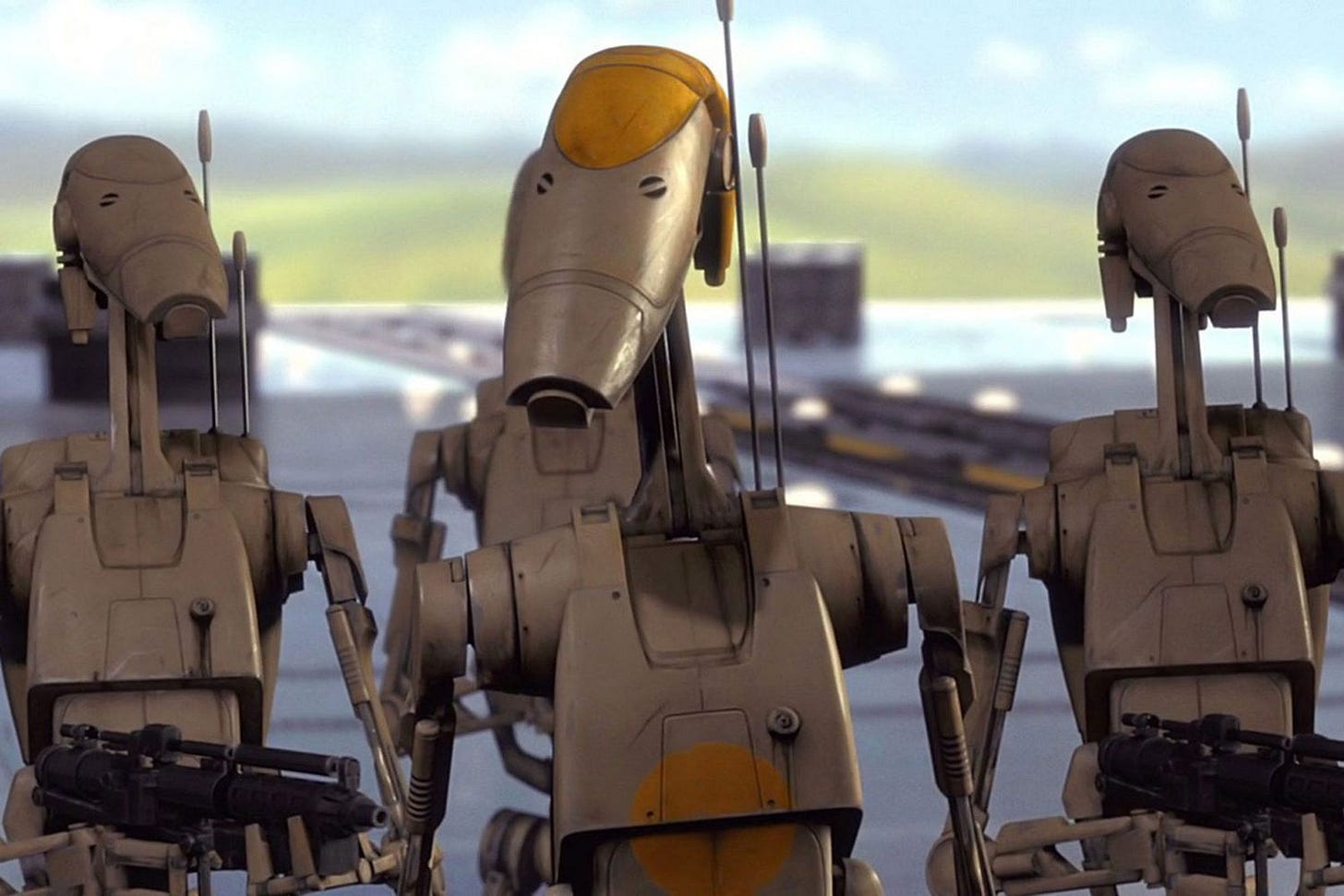
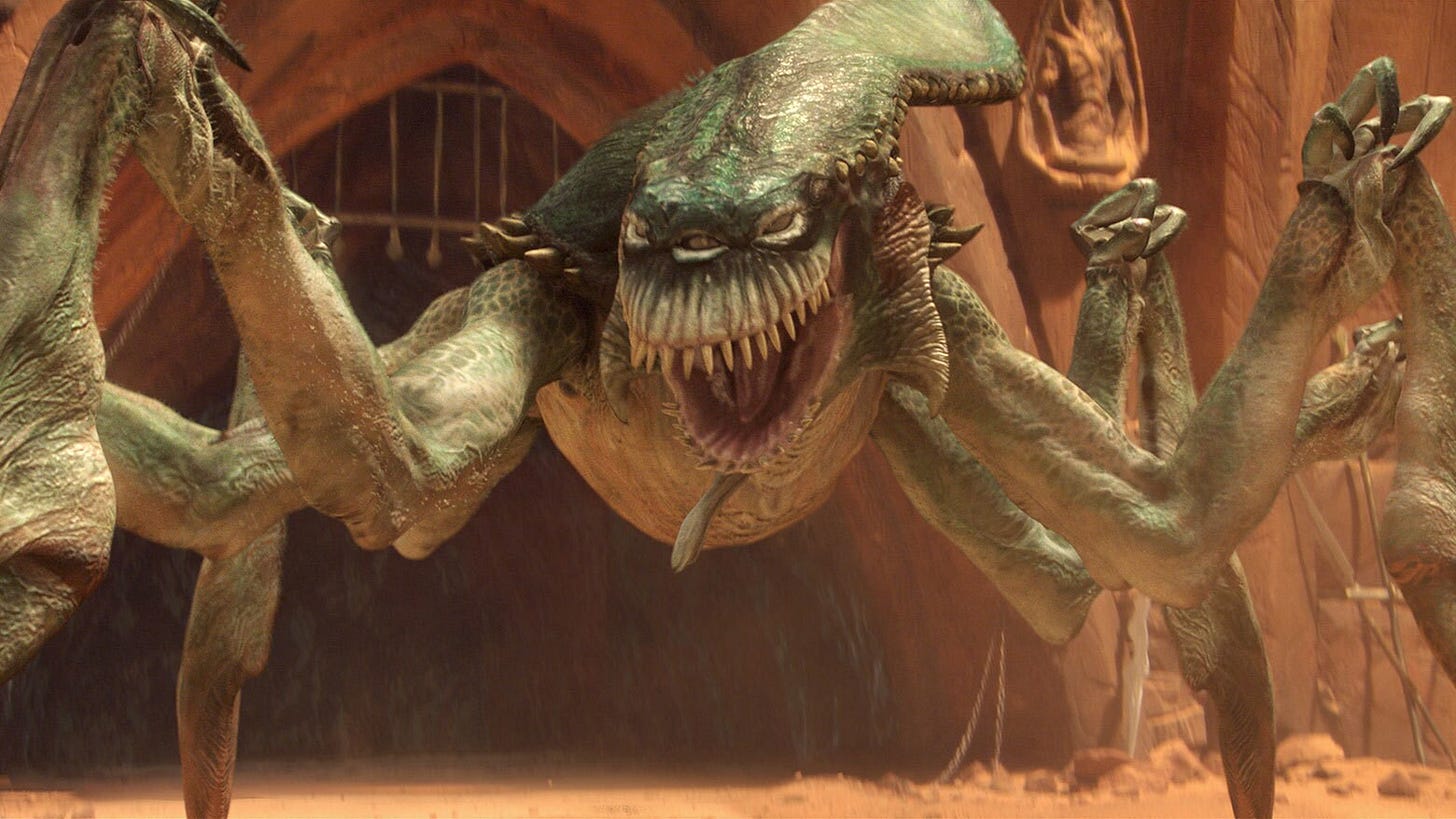

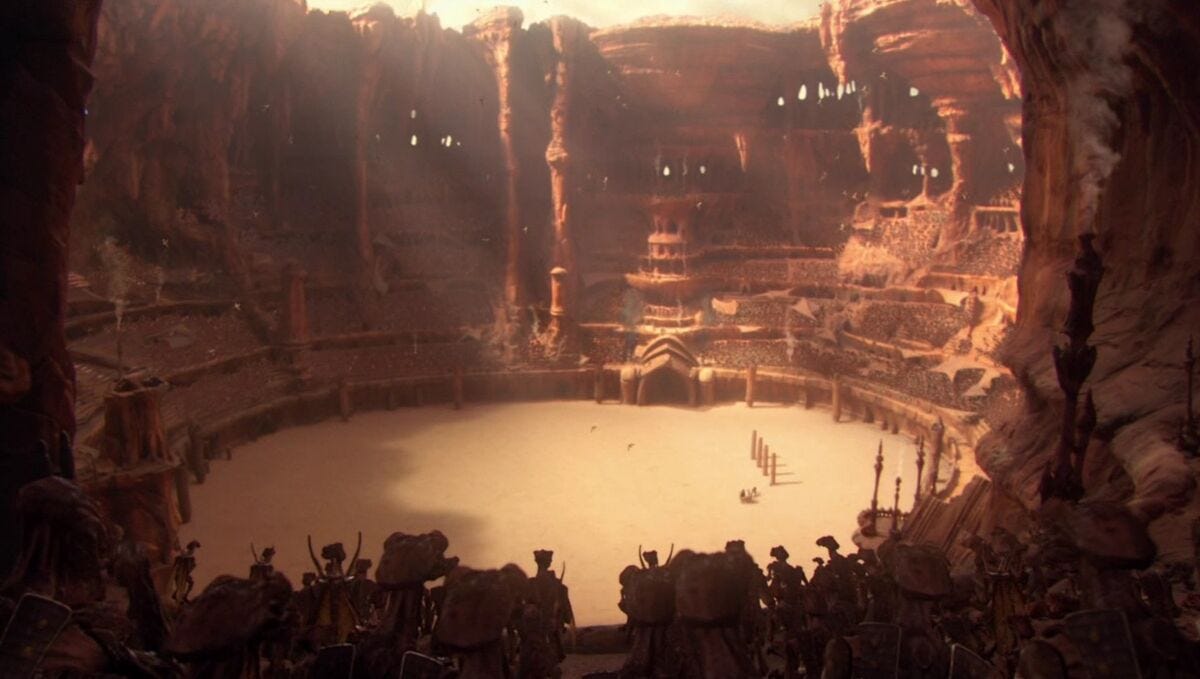
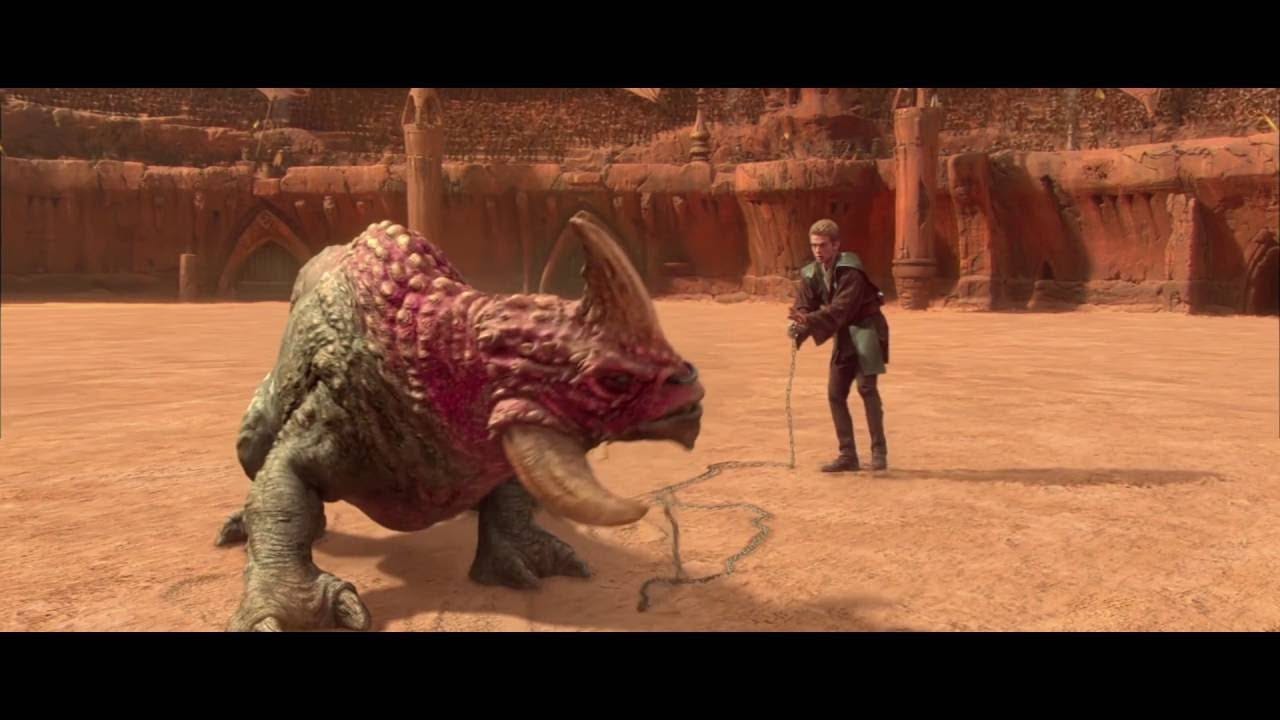

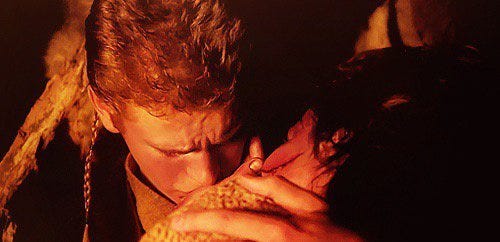
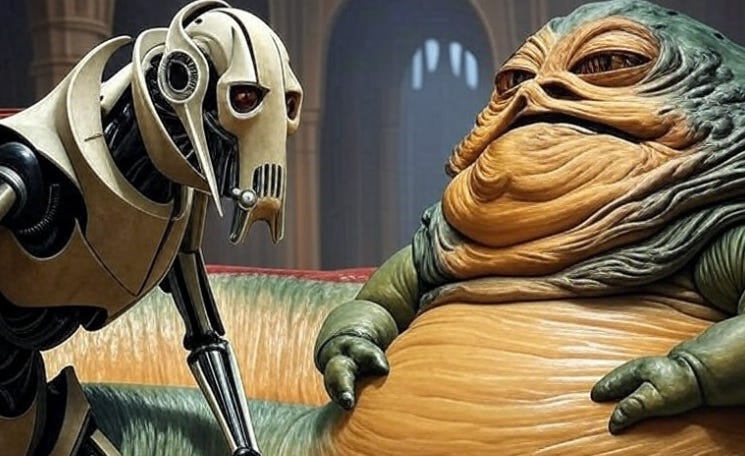




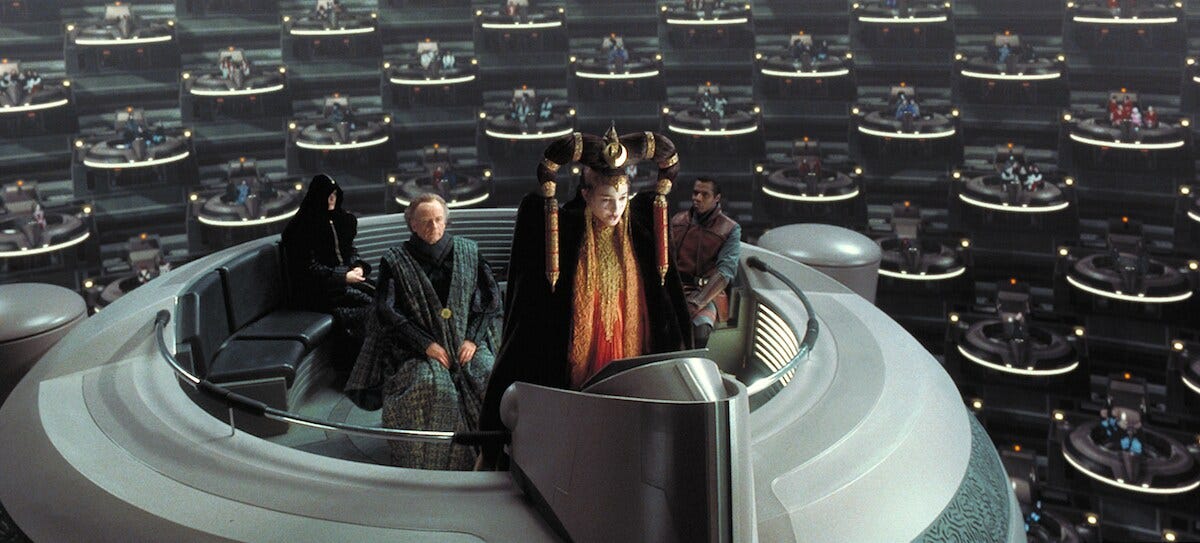
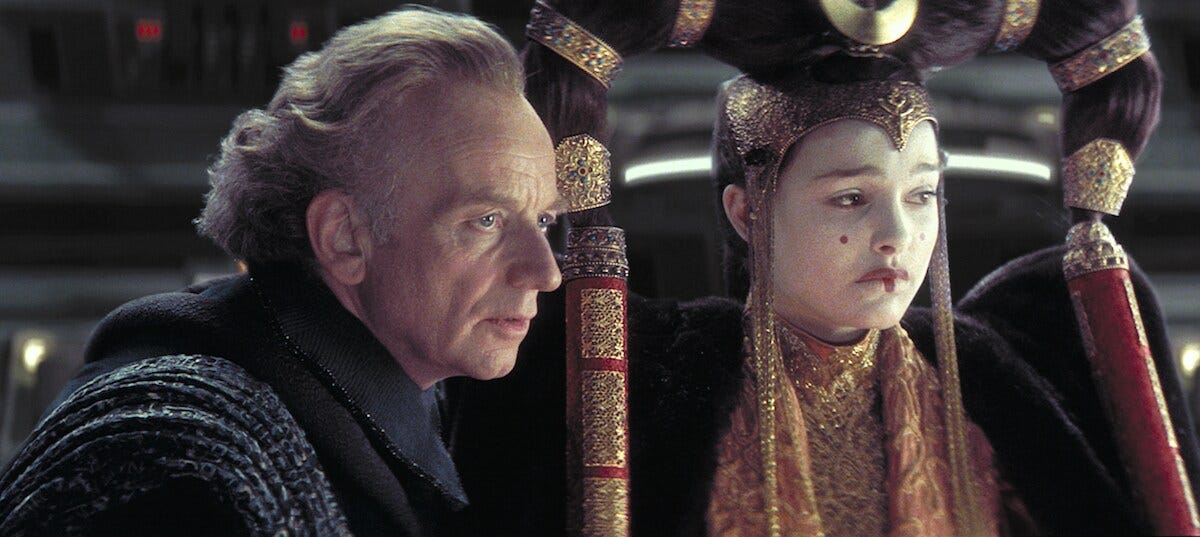
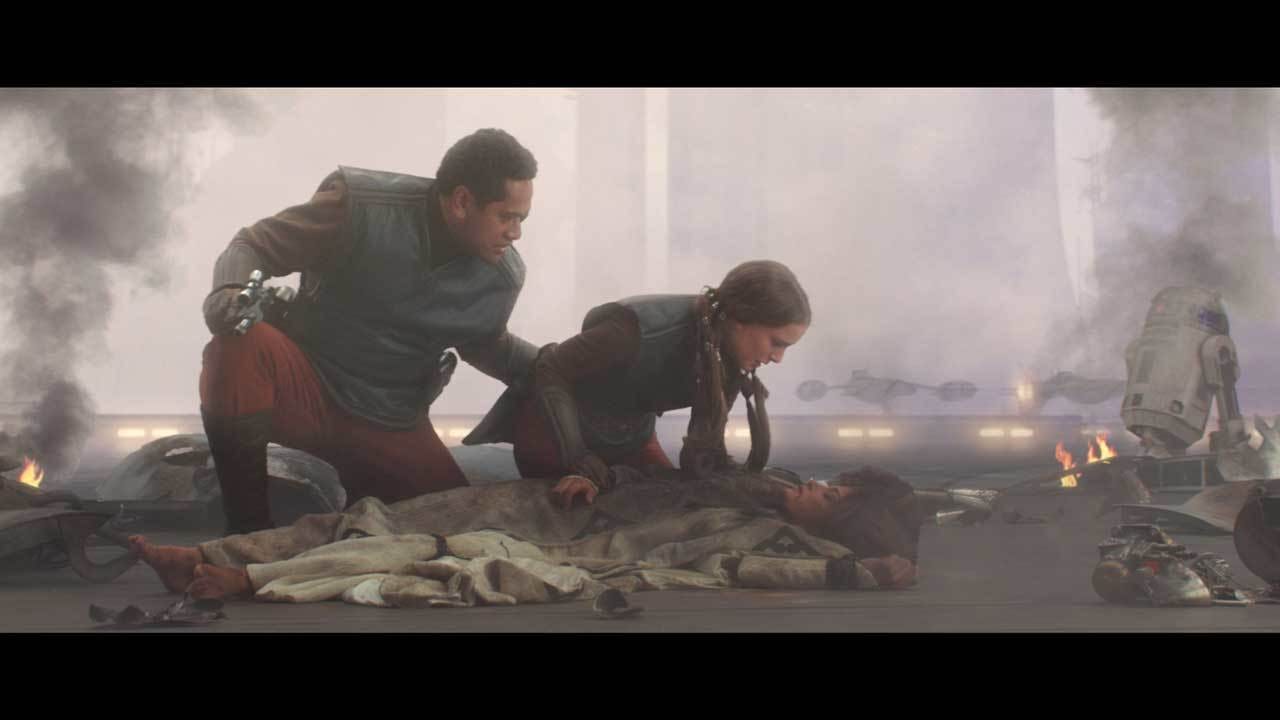



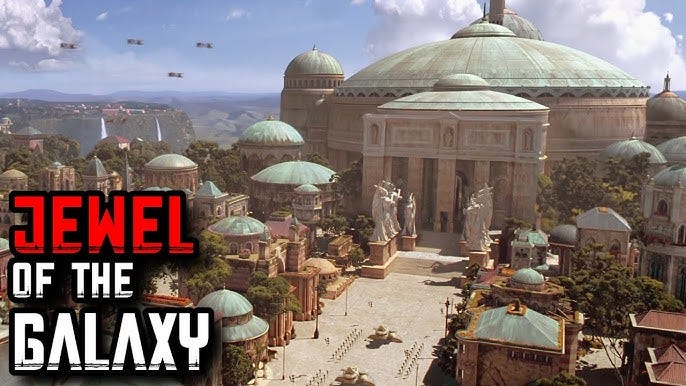
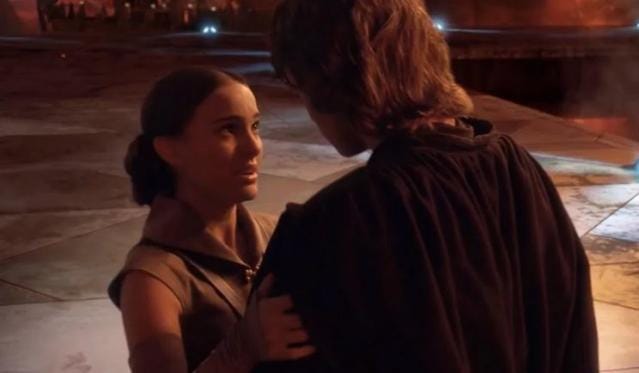

![Star Wars: Episode I – The Phantom Menace – [FILMGRAB] Star Wars: Episode I – The Phantom Menace – [FILMGRAB]](https://substackcdn.com/image/fetch/$s_!nG1r!,w_1456,c_limit,f_auto,q_auto:good,fl_progressive:steep/https%3A%2F%2Fsubstack-post-media.s3.amazonaws.com%2Fpublic%2Fimages%2F5c43c642-ef69-490d-864c-a019c31a0426_1280x548.jpeg)
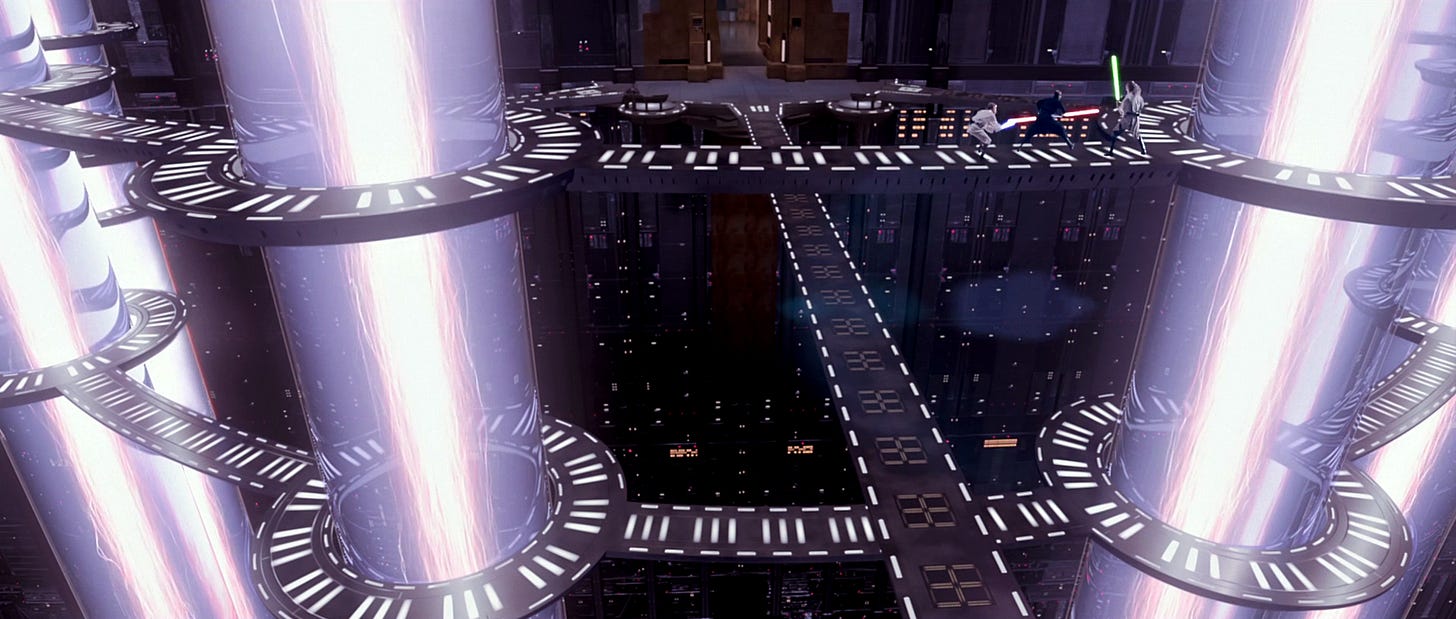
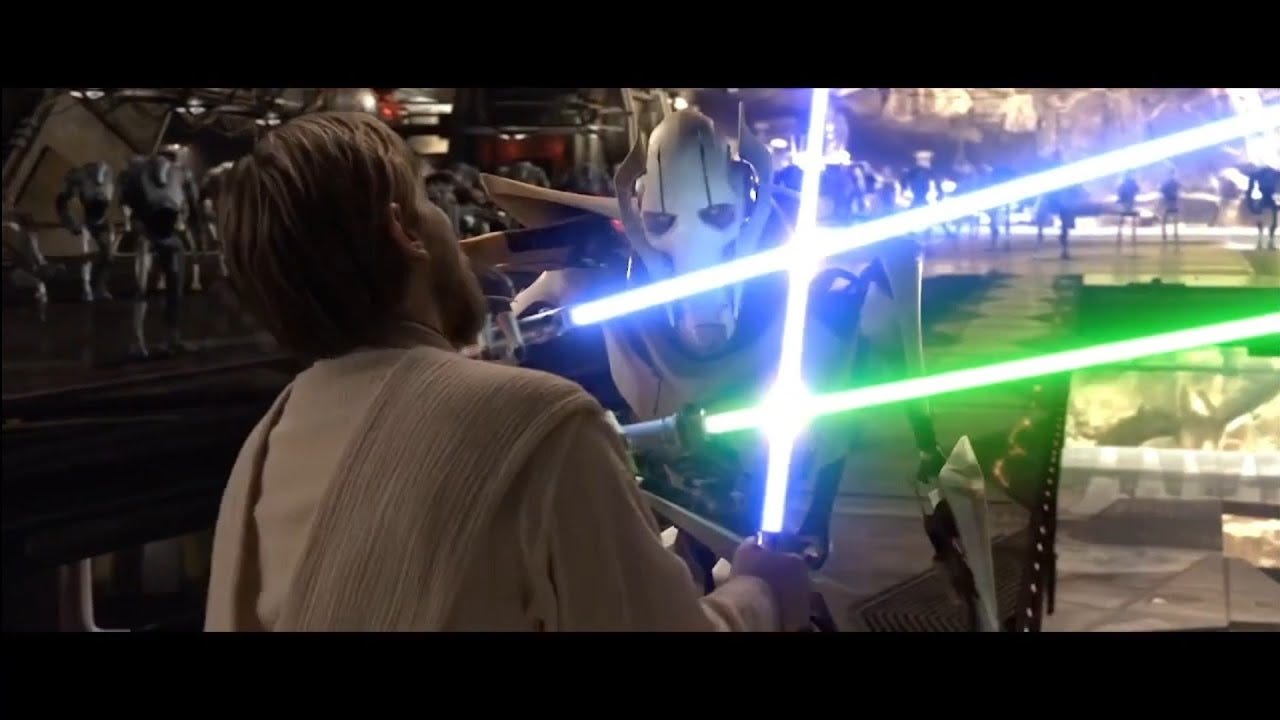
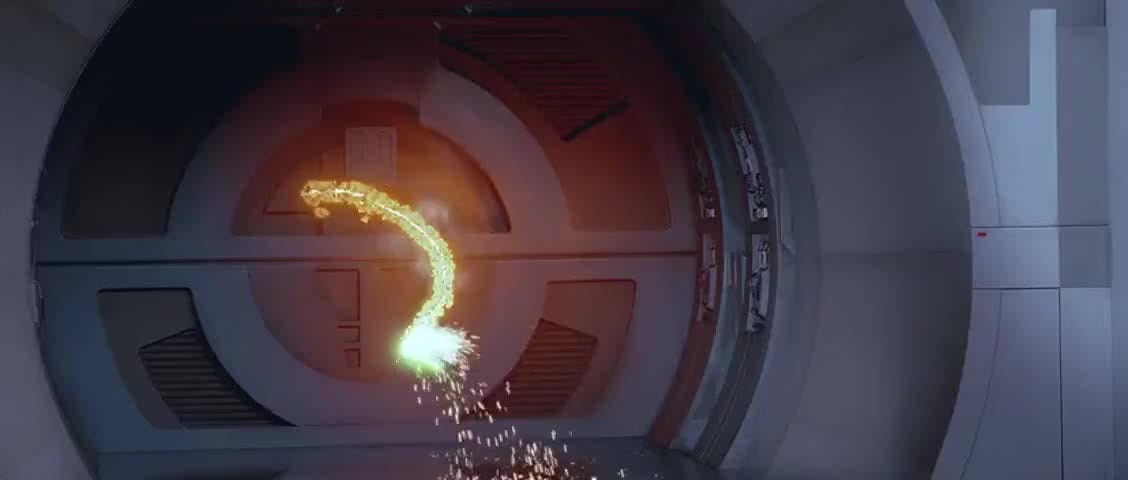
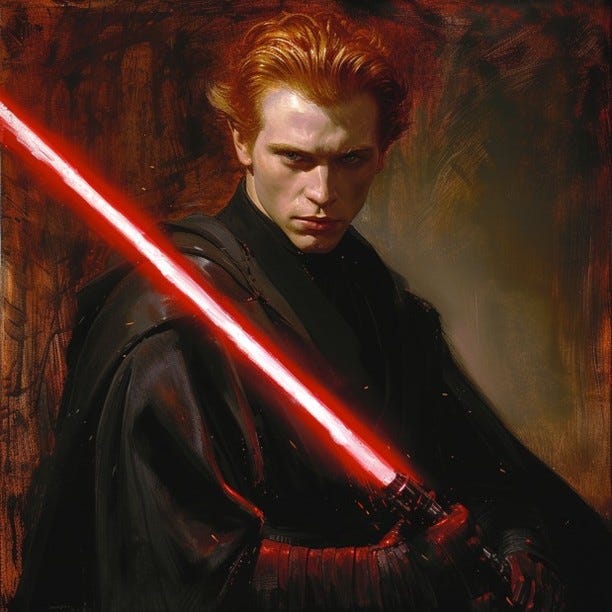
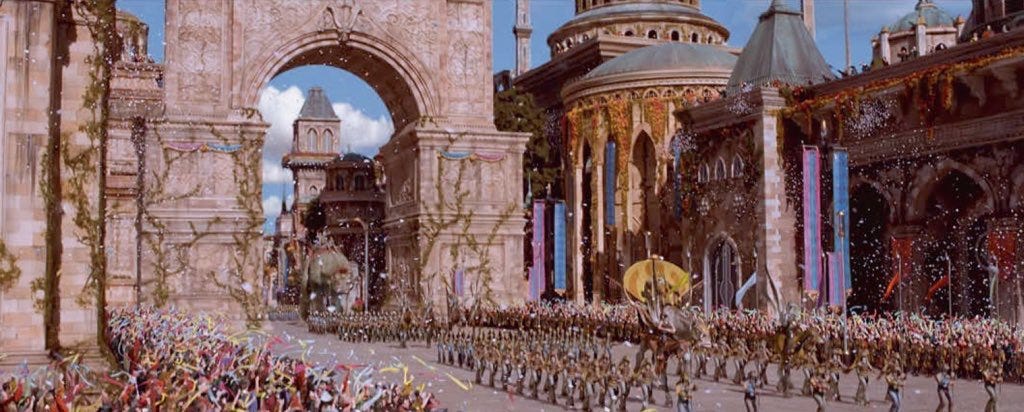

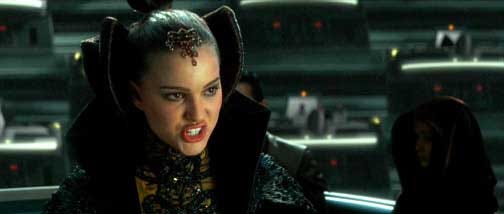
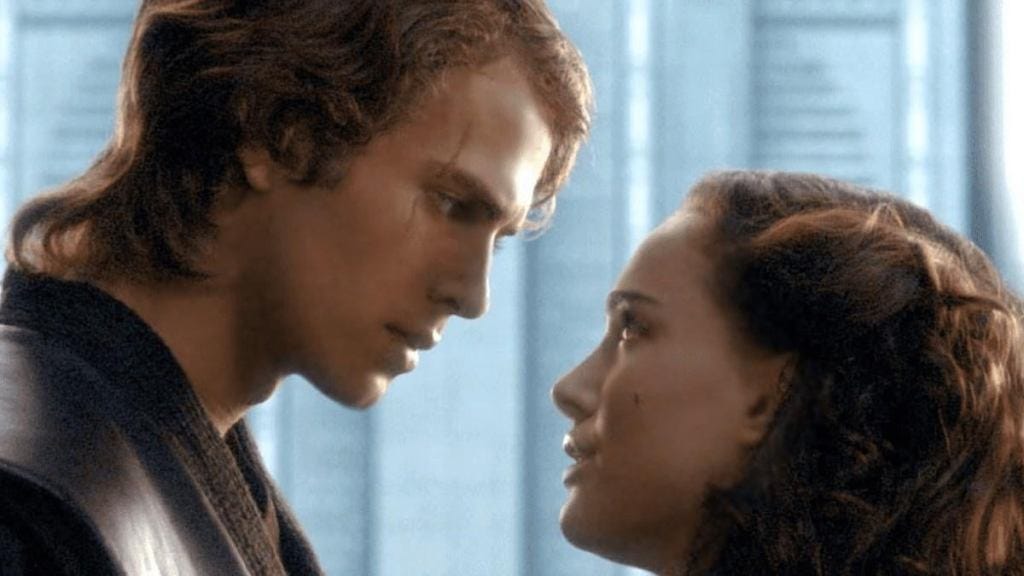
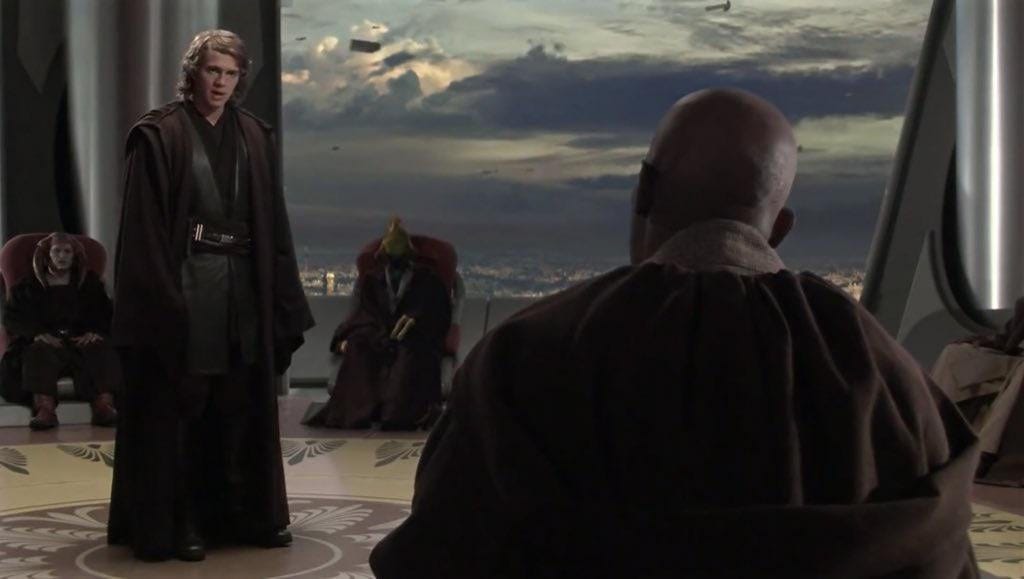
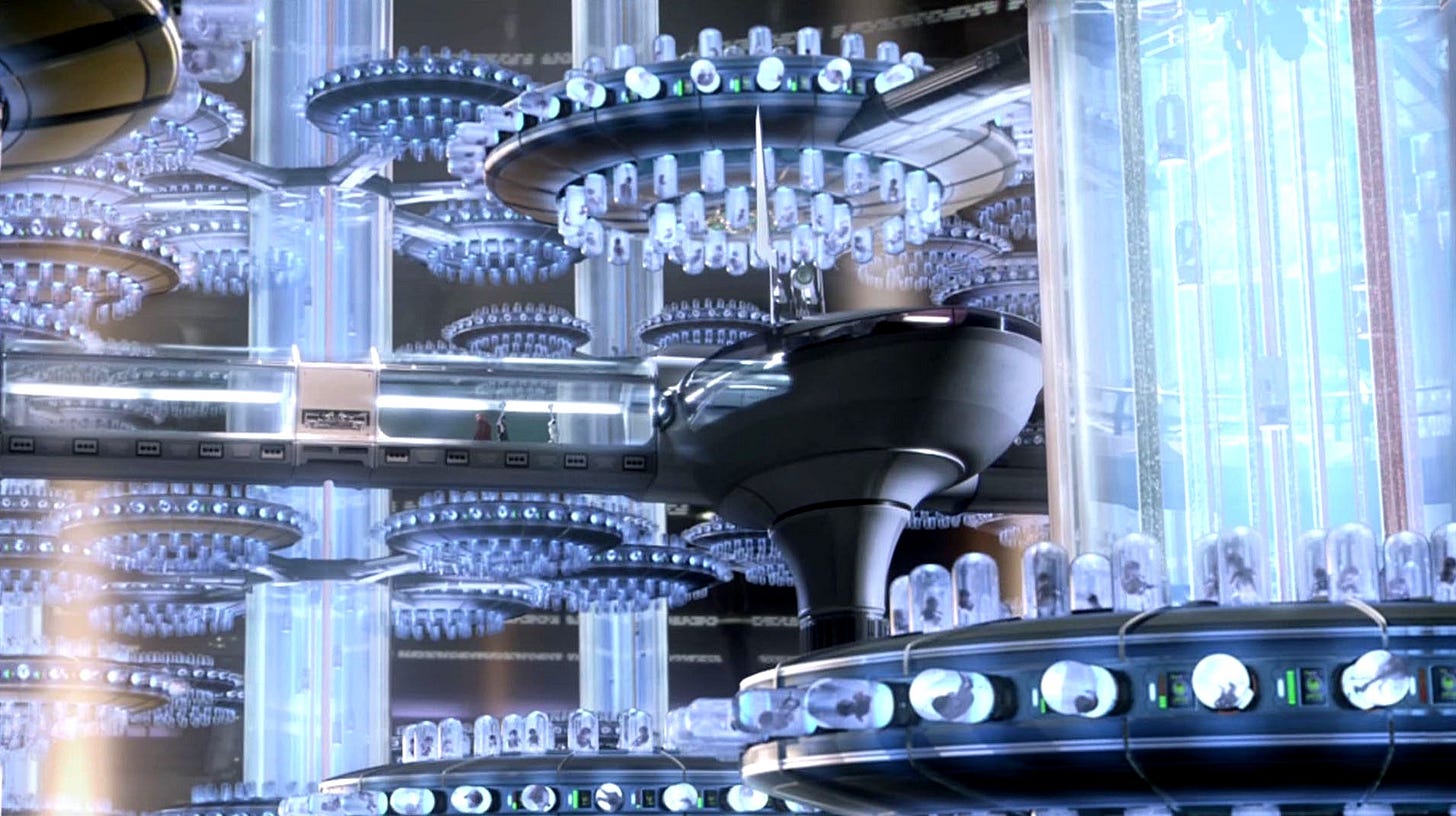


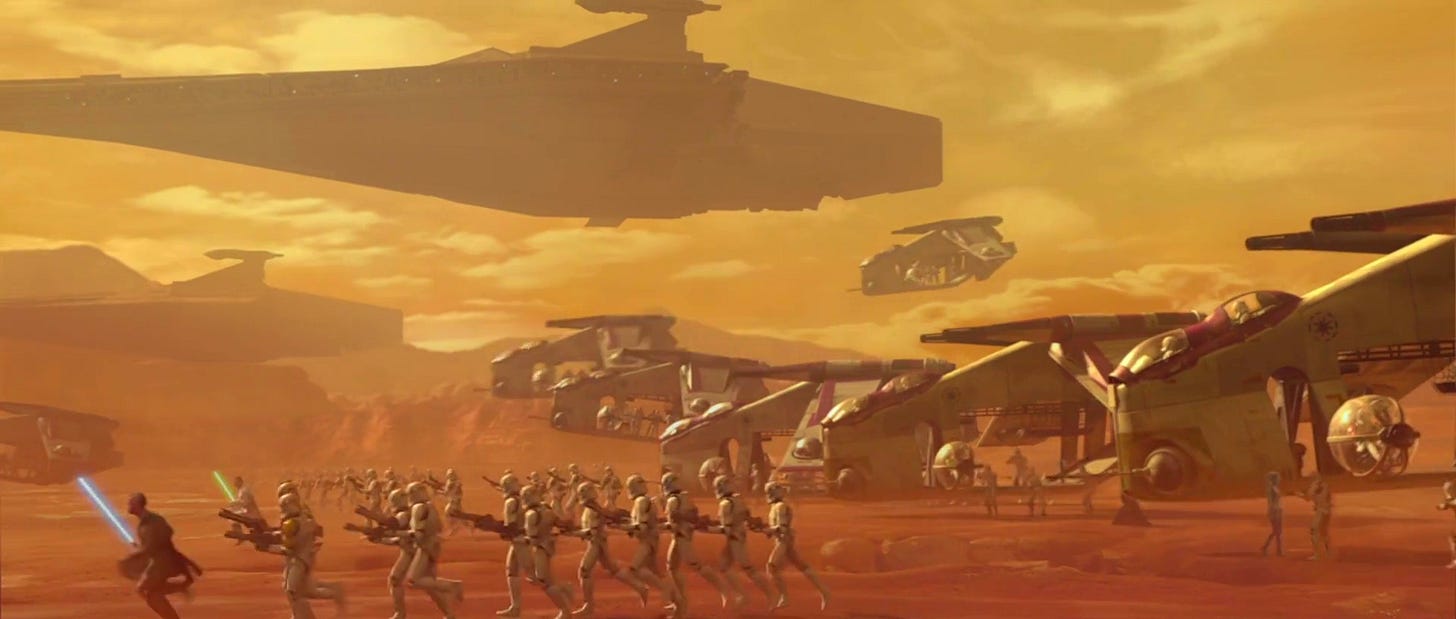
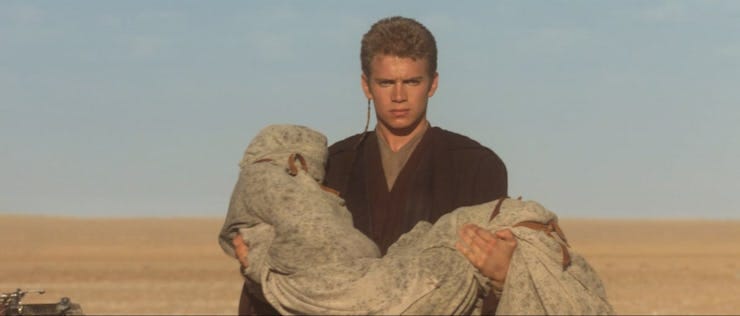









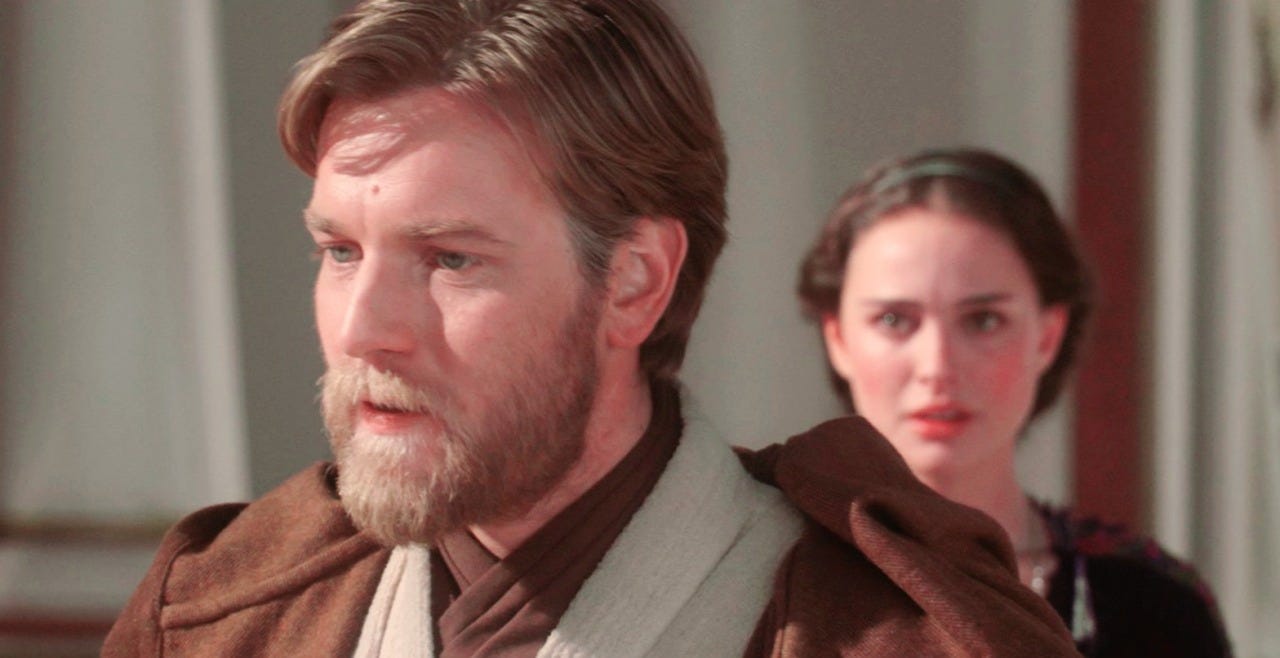

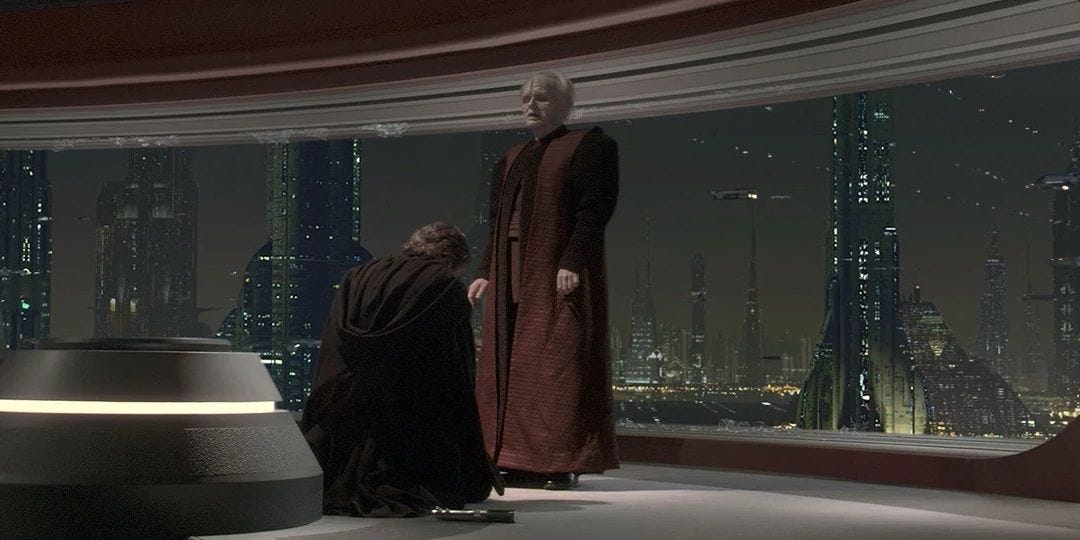
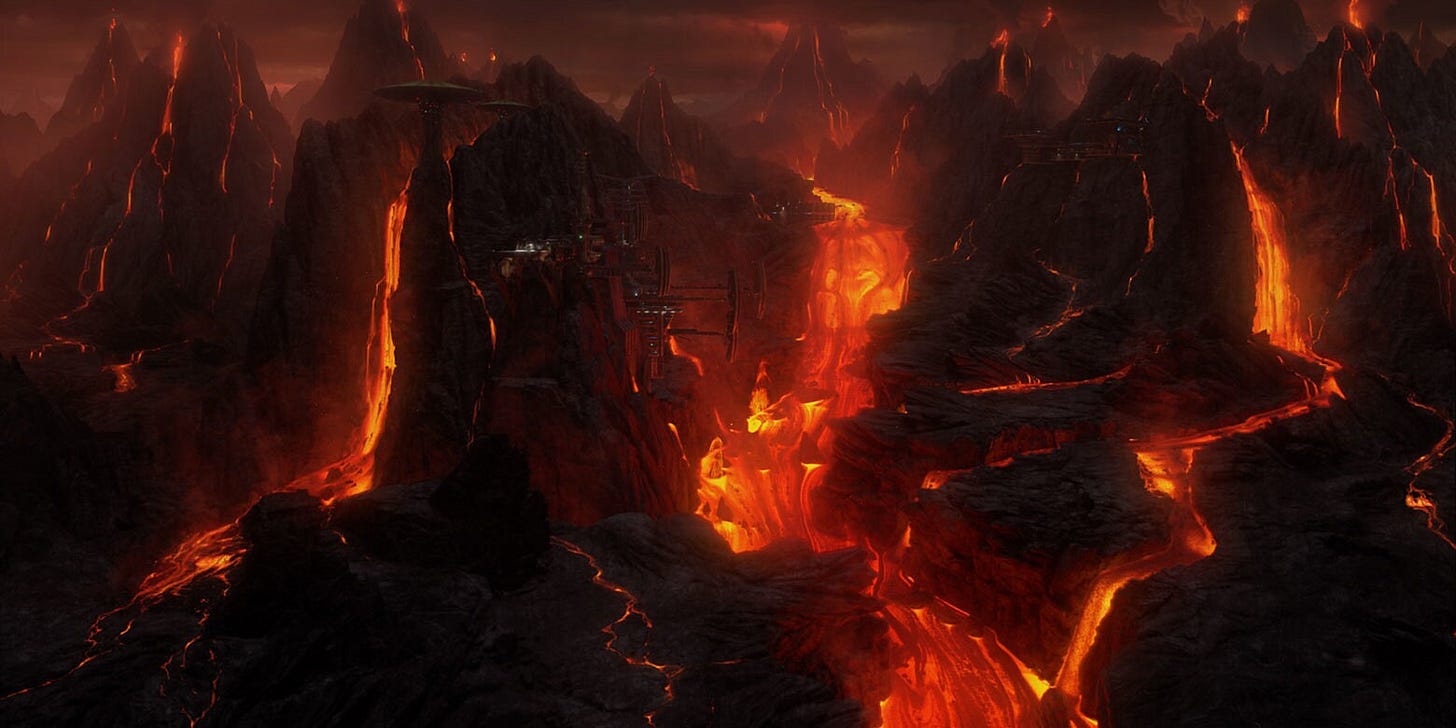
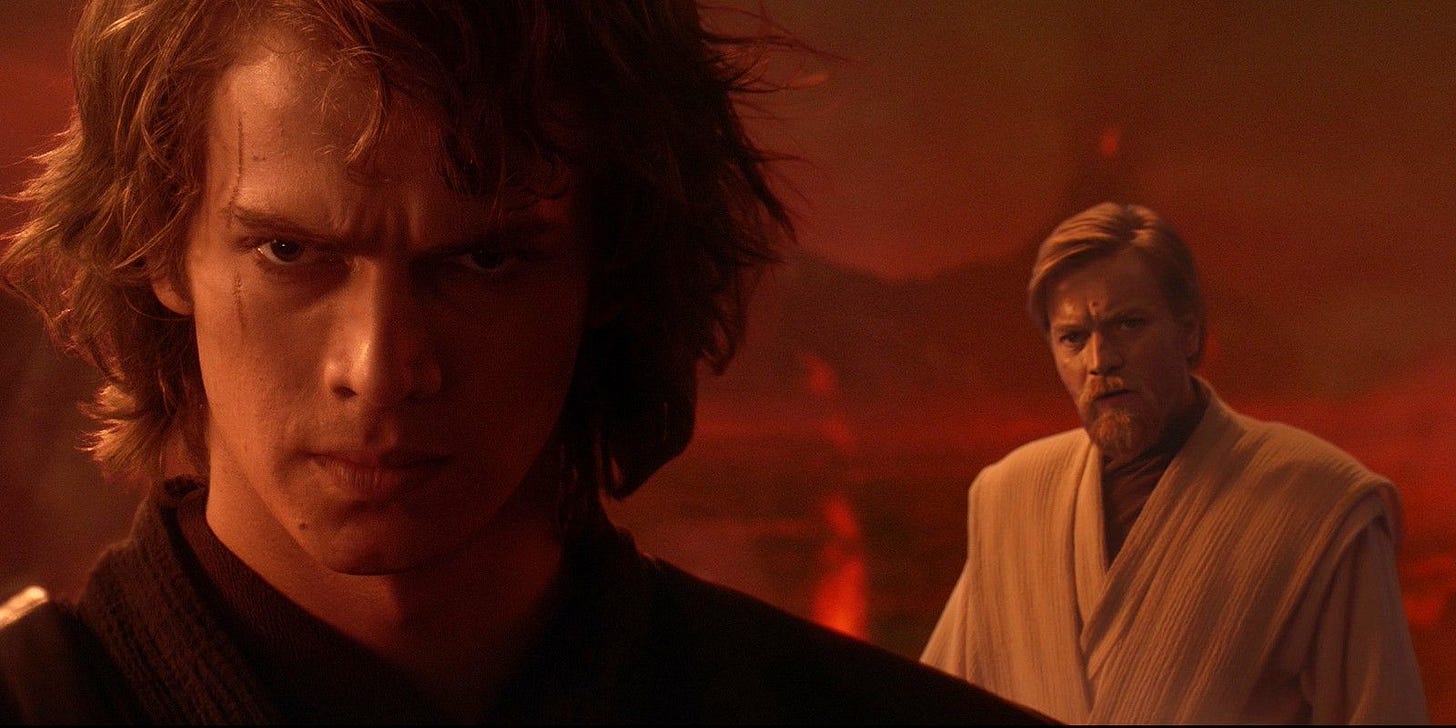
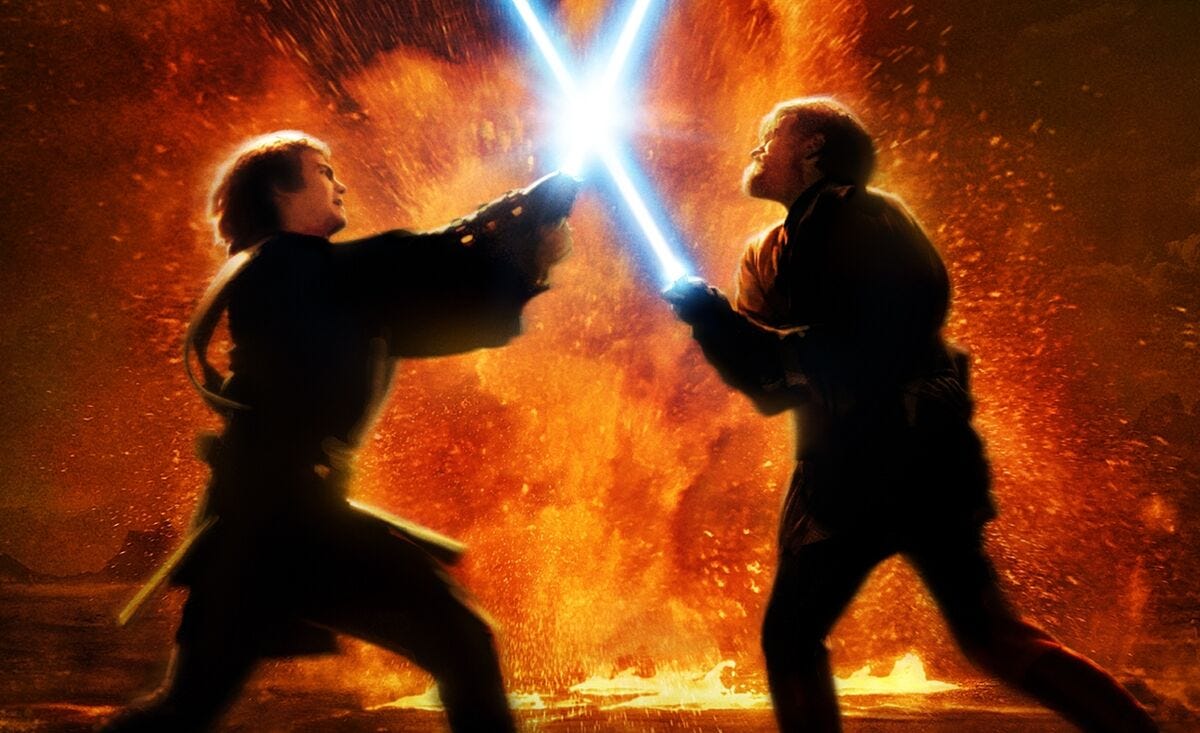
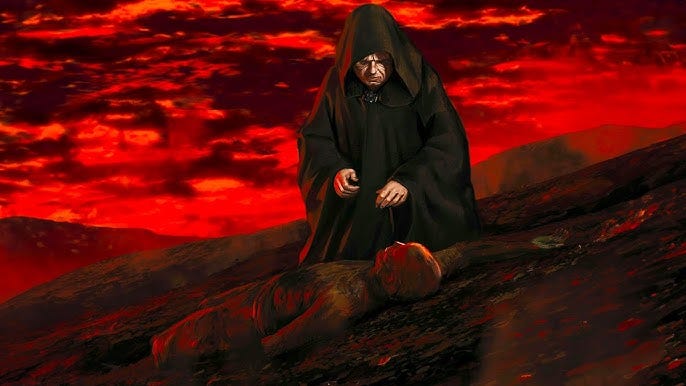



I was just thinking about Star Wars Prequel rewrites. I like your take on the series. The only thing I would change is that I like the idea that Anakin had no surname originally, since he was a slave. Instead, he earned the moniker "Sky Walker" from his piloting skills. That might not quite fit in the story you depict, though.
That was honestly pretty damn good.